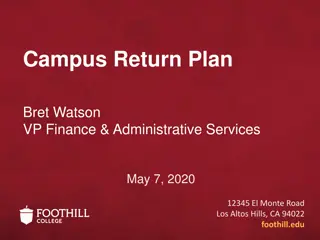Impact of Private Equity on Companies and Workers
Private equity investments can have mixed effects on operating companies and workers. The use of leverage by private equity firms can lead to predictable cash flows but may result in short-term profit-maximizing behaviors by top executives. While there are potential gains in operational engineering and rescuing distressed companies, there are also concerns about layoffs, wage reductions, and asset stripping that transfer value from workers to shareholders and private equity owners.
Download Presentation

Please find below an Image/Link to download the presentation.
The content on the website is provided AS IS for your information and personal use only. It may not be sold, licensed, or shared on other websites without obtaining consent from the author.If you encounter any issues during the download, it is possible that the publisher has removed the file from their server.
You are allowed to download the files provided on this website for personal or commercial use, subject to the condition that they are used lawfully. All files are the property of their respective owners.
The content on the website is provided AS IS for your information and personal use only. It may not be sold, licensed, or shared on other websites without obtaining consent from the author.
E N D
Presentation Transcript
THE BILLION DOLLAR QUESTION: What is the impact of private equity on companies and workers? Eileen Appelbaum, PhD. Center for Economic and Policy Research www.cepr.net SUPER RETURN U.S. 2012 June 7, 2012 Boston, MA
Key Characteristics of PE Model That Affect Operating Companies and Workers PE investments illiquid, more highly leveraged Use of leverage => must yield predictable cash flow PE model is opposite of patient capital Op-co, Prop-co model in retail, restaurants, nursing Financial markets may not recognize negative effects of dividend recaps and failure to invest
Top Executives in Operating Companies Face Perverse Incentives Top executives: Handed debt structure Put up some of own wealth, promised great riches Must meet shareholder targets Fired if they fail to deliver quickly > aggressive cost cutting Acharya & Kehoe 2008 found 39% of CEOs replaced in first 100 days, 69% in four-year period Like hangman s noose, focuses mind on short-term profit maximizing
Sources of PE Gains 1. Operational engineering Improve business strategy, access to superior management Invest in capital, technology, worker skills; engage work force Company grows organically, employment increases PE firm has greater access to capital to finance investment in technology or strategic acquisitions Examples: hospitals, family-owned businesses Distressed investing may rescue companies from bankruptcy Evidence on operating gains is thin need to know more Bankruptcy filings, press reports provide info on failures Even sympathetic academic studies are not persuasive
Sources of PE Gains 1. x 2. Transfer from workers to shareholders Layoff workers, intensify work for those that remain Reduce wages and benefits to increase predictable cash flow Shift work from union to non-union facilities 3. Transfer from portfolio company to PE owners Dividend recaps transfer resources, don t enhance value Op-co/Prop-co: Op-co pays rent, Prop-co sells real estate to REIT Asset stripping => Op-co unable to weather economic volatility
Sources of PE Gains 4. Transfer from taxpayers to PE taxpayer financed capitalism Leverage alters debt structure, reduces tax liabilities Magnifies returns, but increases risk of financial distress/bankruptcy Use of tax arbitrage reduces state, federal tax payments (Badertscher/Katz/Rego 2011) 5. Breach of trust (Schleifer and Summers 1988) Stable enterprises depend on implicit contracts shareholders/stakeholders Reneging on implicit contracts gives quick boost to bottom line But undermines trust necessary to long-term sustainability 6. Bankruptcy for profit (Ackerlof and Romer 1993) PE firm takes portfolio company through bankruptcy, emerges as owner But with write down of debt, transfer of pension responsibility to PBGC
PE and Jobs: (Davis, Haltiwanger, Jarmin, Lerner, & Miranda 2011 ) Impact on Establishments Employment grows faster in PE targets prior to acquisition clear pattern of slower growth at targets post buyout differentials cumulate to 3.2% of employment in the first two years post buyout and 6.4% over five years. (p. 17) Slower employment growth at PE targets post buyout entirely reflects a greater pace of job destruction -- half due to closings (pp. 17-18) In retail, employment falls by nearly 12% in PE targets relative to controls effect of prop-co/op-co model and asset stripping
PE and Jobs: Results from 2011 Study Impact on Firms Continuers and deaths: Summing these two components yields a two- year employment growth rate differential of -5.49 percentage points for PE targets, a large difference (p. 23) Adding in greater job growth for targets than controls at greenfield establishments (+1.87) yields a differential of -3.62 percentage points for targets (p.23) Only when acquisitions are included does the employment growth differential shrink to less than 1% Finally, bringing in the role of acquisitions and divestitures reduces this differential to -0.81 points (p. 23)
Risk of Bankruptcy Str mberg 2008: Compares PE and publicly traded firms For LBOs completed between 1970 and 2002 (before financial crisis) 7% became bankrupt while in PE hands Twice annual bankruptcy rate of publicly traded: 1.2% vs. 0.6% 1980s boom: Many LBOs ended in default or bankruptcy (Kaplan & Str mberg 2009, Wright et al. 2007) Hotchkiss/Smith/Str mberg 2011: Highly leveraged firms 2,156 firms, half PE-owned and half not, Jan 1997-Apr 2010 Quarter of sample had a default between 2007 and 2010 (p. 9-10) 12.3% for 2001 LBOs, 31.6% for 1997 LBOs 25% default rate: 2007 2010Q1
Conclusion PE has potential to improve portfolio company performance Better access to capital markets and managerial know-how But laser-like focus on maximizing short-run shareholder returns, high leverage, short time horizon to exit Leads to decisions that enrich investors and company execs without due regard for long-term competitiveness of companies Regulation + reform of tax code can reduce risk of financial distress and incentives for opportunism & self-dealing
References Acharya, V. and C. Kehoe (2008). Corporate Gevernance and Value Creation: Evidence from Private Equity. http://www.ecgi.org/competitions/roi/files/Acharya_Kehoe_v5.pdf Ackerlof, G. A. and P.M. Romer. (1993). Looting: The Economic Underworld of Bankruptcy for Profit. Brookings Papers on Economic Activity, 24:1-74. Appelbaum, E., R. Batt and I. Clark (2012). Financial Capitalism, Breach of Trust and Collateral Damage, paper presented at Across Boundaries: An Interdisciplinary Conference on the Global Challenges Facing Workers and Employment Research, London School of Economics, December 13, 2011. http://www.cepr.net/index.php/publications/reports/financial-capitalism-breach-of-trust-and-collateral- damage Badertscher, B., S.P. Katz & S.O. Rego (2011). The Impact of Private Equity Ownership on Portfolio Firms Corporate Tax Avoidance, Manuscript. Davis, S., J. Haltiwanger,, R. Jarmin, J. Lerner, and J. Miranda. (2011). Private Equity and Employment. NBER Working Paper 17399. Cambridge. MA: National Bureau of Economic Research. Available at http://www.nber.org/papers/w17399 Hotchkiss, E., D.C. Smith, & P. Str mberg (2011). Private Equity and the Resolution of Financial Distress, Manuscript. Schleifer, A. and L. H. Summers (1988). Breach of Trust in Hostile Takeovers, in A. J. Auerbach, ed., Corporate Takeovers: Causes and Consequences: 33-68. Cambridge, MA: National Bureau of Economic Research. Str mberg, P. (2008). The New Demography of Private, Equity. The Globalization of Alternative Investments Working Papers Volume 1: The Global Economic Impact of Private Equity Report 2008, World Economic Forum, January: 3-26. Wright, M., A. Burrows, R.. Ball, L. Scholes, M. Meneleman & K. Arness (2007). The Implications of Alternative Investment Vehicles for Corporate Governance, Cited in A. Watt (2008). The Impact of Private Equity on European Companies and Workers: Key Issues and a Review of the Evidence, Industrial Relations Journal 39(6): 548-568.























